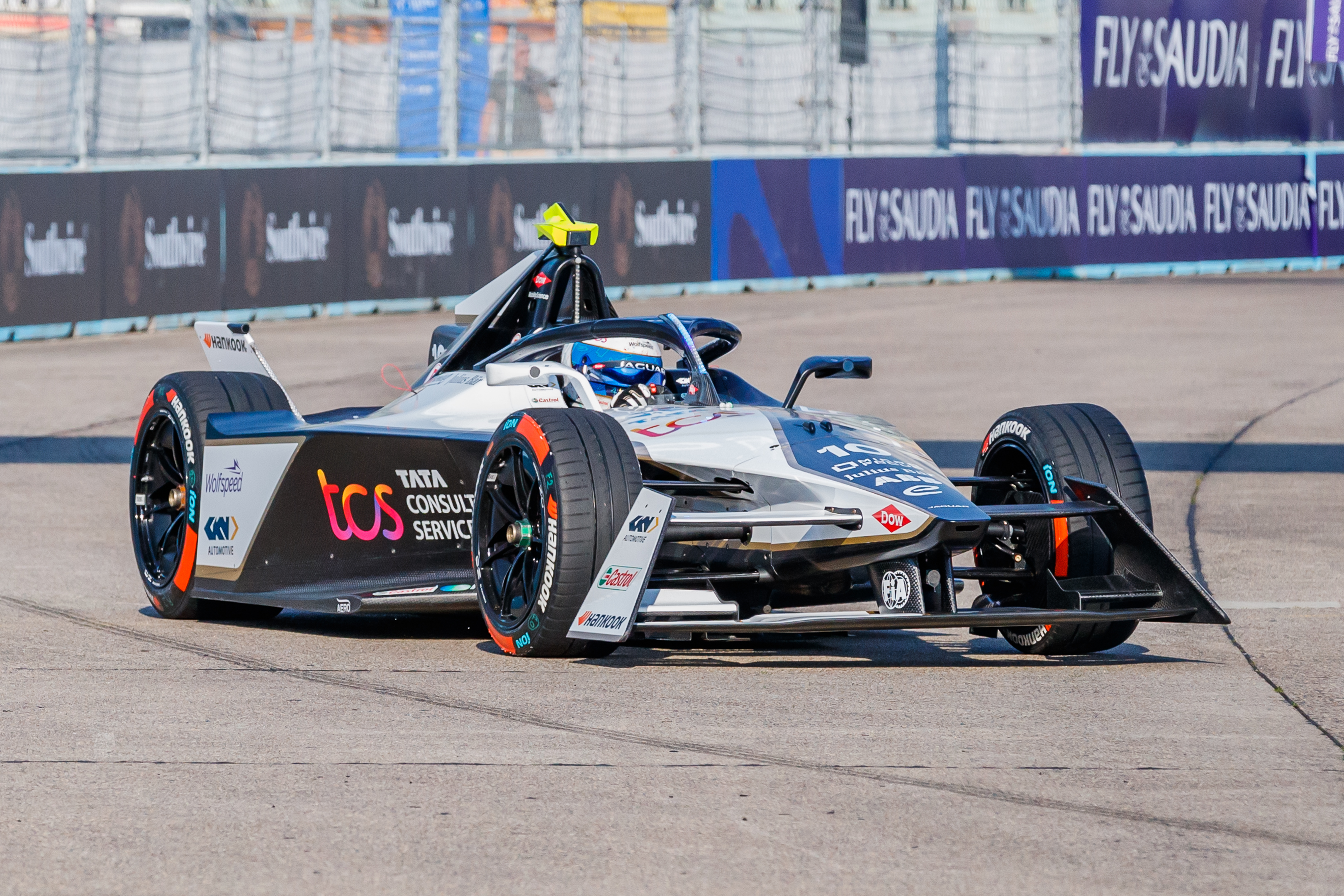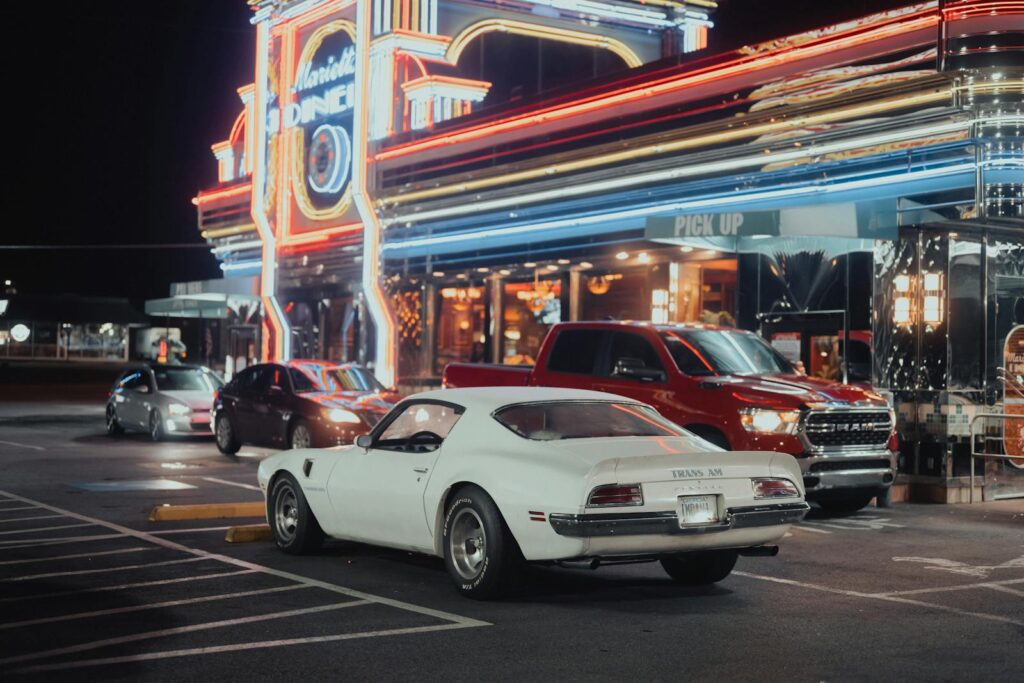
There’s something deeply woven into the American psyche about the open road, a feeling of absolute freedom captured in the simple act of a road trip. Windows down, radio softly humming, perhaps a cooler full of sandwiches nestled in the back for an impromptu picnic. For the Baby Boomer generation, this wasn’t merely a mode of transport; it was a cherished rite of passage, an essential part of understanding the vast, diverse tapestry of America. It was about piling into the family car and heading out, letting the long stretches of highway unfold before them.
But as the decades have turned, the very fabric of American travel has undergone a quiet, yet profound, transformation. Those legendary routes that once pulsed with vibrant energy have, for various reasons, begun to fade from our collective consciousness. Highways were rerouted, the allure of distant lands grew stronger with cheaper air travel, and our collective patience for the unhurried magic of a long drive seemed to shrink. We’ve often traded the meandering journey for the efficient shortcut, sometimes without realizing what we’ve lost.
So, what truly happened to these beloved American odysseys? This article invites you on a thoughtful journey, a retrospective exploration of eight once-iconic road trips that families, for the most part, simply don’t plan anymore. We’ll delve into the romantic narratives that once defined them and uncover the practical shifts that led to their decline. Join us as we revisit these routes, not just as lines on a map, but as cherished chapters in America’s travel story, urging us to remember the joy of the journey itself.
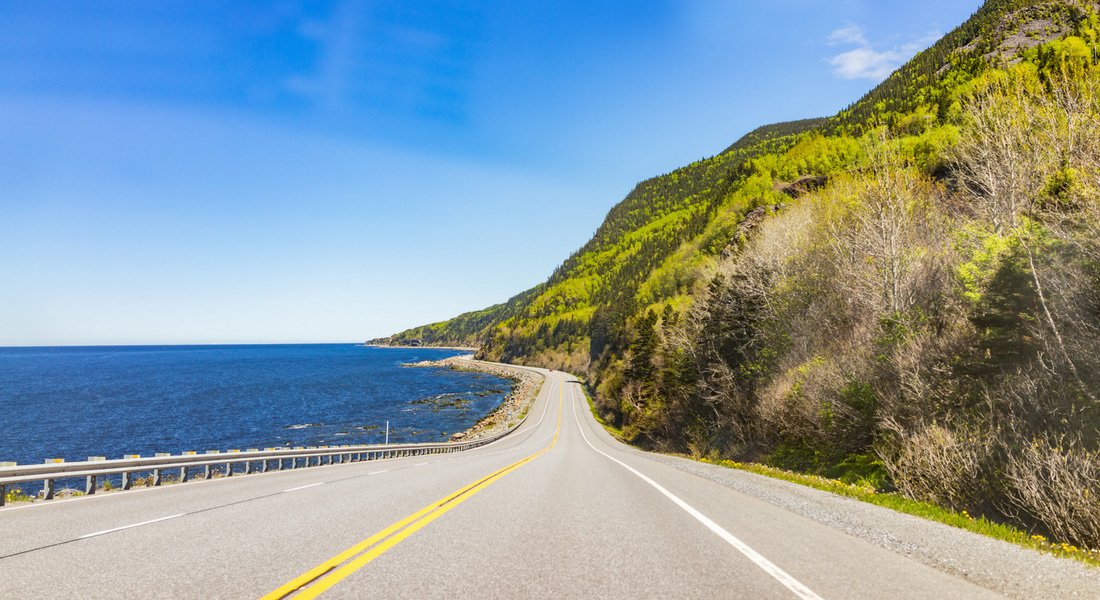
1. **Route 66 from Chicago to Los Angeles**The very phrase, “Get your kicks on Route 66,” instantly conjures images of boundless freedom and the quintessential American dream playing out across the vast canvas of the country. Stretching majestically from Chicago to Los Angeles, Route 66 was far more than just a highway; it was an enduring emblem of adventure. For generations, it embodied the spirit of westward expansion, cementing its place in popular culture as *the* legendary highway, synonymous with exploration and discovery.
For Baby Boomers, this iconic route was the backdrop for countless childhood escapades. Families, packed into bustling station wagons, would embark on epic cross-country journeys. Every mile revealed a new marvel: the captivating glow of neon signs, the comforting aroma of freshly baked pie from classic diners, and the sheer delight of quirky attractions like the world’s largest ketchup bottle. These stops were never mere detours; they were integral chapters in an unforgettable saga of discovery and shared laughter.
It was a time when the journey held an intrinsic value, perhaps even surpassing the destination itself. Conversations flowed effortlessly, landscapes transitioned dramatically from the urban sprawl of the Midwest to the arid beauty of the Southwest. The profound vastness of the American heartland was absorbed mile by unhurried mile, fostering a deep and personal connection to the land and its diverse tapestry of small towns. This immersive experience defined an entire era of travel.
Yet, the relentless march of progress, embodied by the ambitious development of the Interstate Highway System, led to Route 66’s decline. The interstates, designed for speed, systematically bypassed much of its original, meandering path. Consequently, many once-thriving small towns found themselves isolated, their economies dwindling, their unique charm sadly fading. Younger generations, accustomed to swift, direct routes, often don’t even realize fragments of this historic artery still exist.
Today, while sections of the “Mother Road” retain a potent nostalgic allure, particularly for dedicated enthusiasts, it no longer commands the mass appeal it once did. The convenience of air travel and faster routes has sidelined the slow, meandering journey it represents. Still, if you ever yearn to touch a living piece of history, Route 66 remains a powerful, poignant reminder of an era when the journey itself was the grandest reward, its spirit whispering tales of freedom on the asphalt.
Read more about: Beyond the Garage: A Deep Dive into the Thriving World of Car Clubs and Automotive Communities
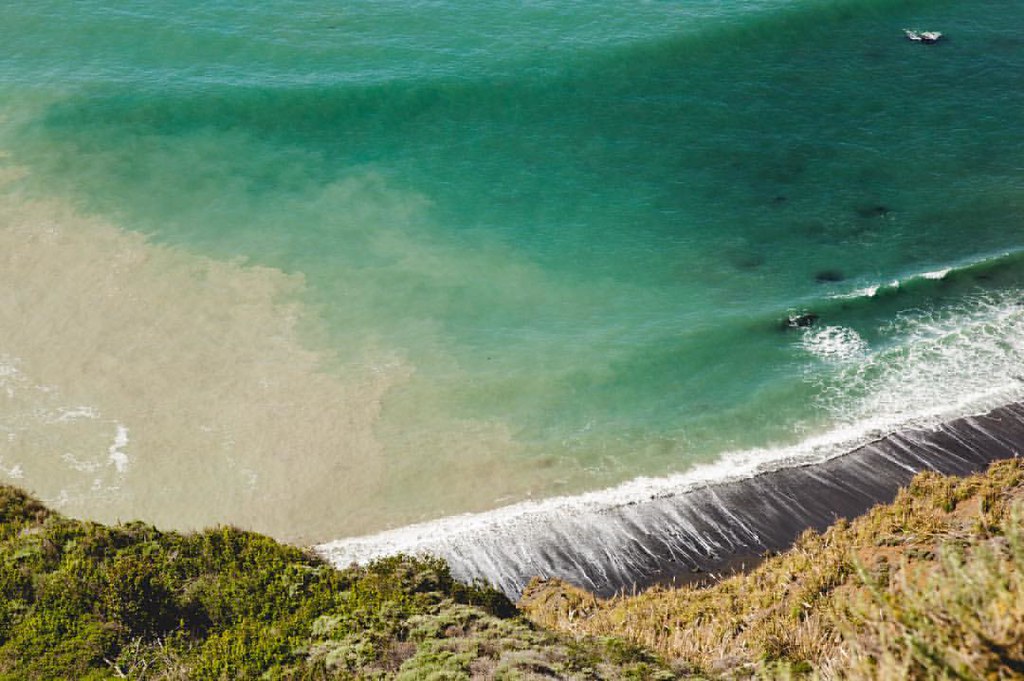
2. **The Pacific Coast Highway in California**Ah, the legendary Pacific Coast Highway – PCH, as it’s affectionately known to those who’ve felt its allure. For many, it represented, and in iconic flashes still does, the absolute pinnacle of cool, a quintessential California dream brought to life. Conjure the image: a sleek, open-top convertible gracefully winding along the dramatic, often precarious, cliffs of Big Sur. The relentless Pacific Ocean waves crash hundreds of feet below, sending plumes of cool mist swirling upwards, painting a scene of breathtaking, untamed beauty that feels profoundly elemental and awe-inspiring.
Driving Highway 1 was never merely a pragmatic exercise; it was, in its essence, a profound statement of lifestyle and aspiration. It declared that you had “made it,” that you possessed the enviable luxury of time and perspective to truly savor the panoramic vistas. This was the undisputed route for discerning travelers who held the journey in as high esteem as the destination, offering a quintessential California experience. It spoke volumes of freedom, romance, and an undeniable connection to the wild, rugged edge of the continent.
Boomers fondly recall the almost ethereal beauty of those drives, the invigorating sensation of the salty air whipping through their hair, and the sheer, overwhelming scale of the coastline unfolding majestically before them. For many, it was a pilgrimage, a heartfelt testament to California’s enduring allure. The charming stops along the way – from secluded coves to bustling coastal towns and expansive vistas – were intricately woven into the very fabric of the trip, meticulously crafting a rich tapestry of unforgettable moments and cherished memories.
Regrettably, the PCH of the present day contends with modern challenges that have chipped away at its carefree image. The increasing frequency and devastating intensity of wildfires have tragically ravaged portions of its scenic beauty. Persistent landslides lead to prolonged road closures, transforming what was once a symbol of unbridled freedom into a frustrating logistical headache. Furthermore, the sheer, often overwhelming volume of traffic, particularly in popular sections, has irrevocably eroded the serene, unhurried experience it once offered.
In our fast-paced world, most contemporary travelers, seeking rapid transit, now instinctively opt to fly directly into hubs like San Francisco or Los Angeles. This convenient choice means skipping what was once a beloved, long, and incredibly scenic detour along the coastline. It’s a truly lamentable shame, as there exists nothing quite comparable to that profound moment when the endless, cerulean expanse of the Pacific Ocean suddenly unfurls itself directly beside you. It’s a breathtaking, infinite vista that profoundly redefines the very essence and joy of a coastal drive.
Read more about: Mechanic’s Favorite: 14 Critical Automotive Rust Truths – From Unyielding Fortresses to Early Corrosion Casualties
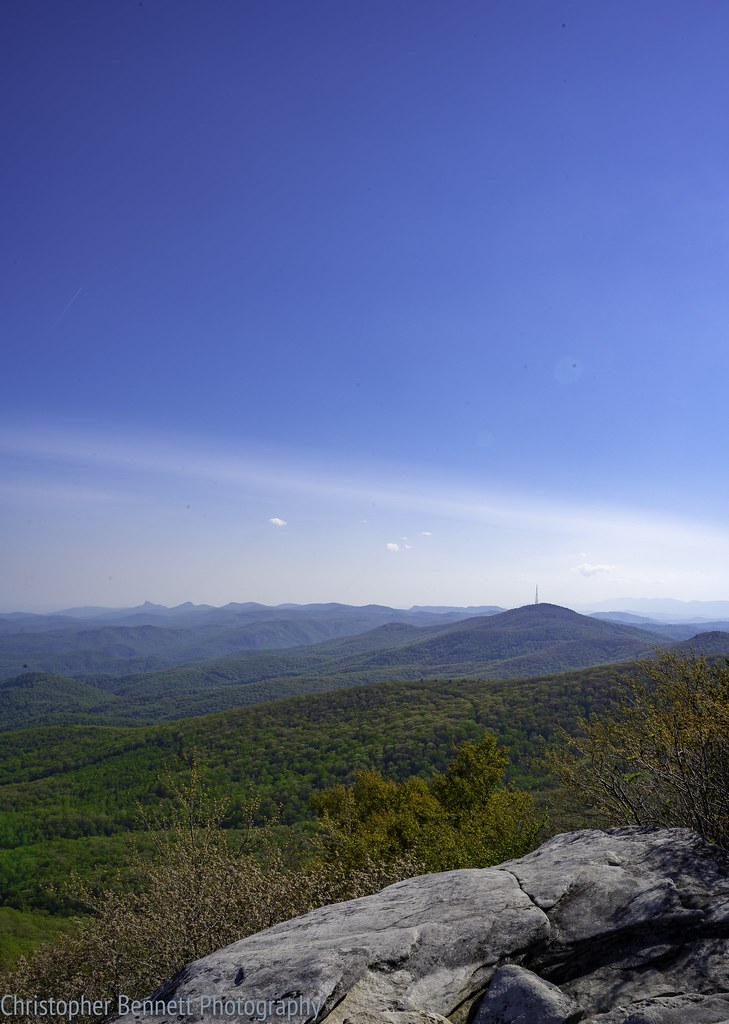
3. **The Blue Ridge Parkway through Virginia and North Carolina**If one were to imagine a road trip crafted for pure sensory delight and profound reflection, it would be the Blue Ridge Parkway. This magnificent, winding ribbon of asphalt through the Appalachian Mountains was, for generations, the undisputed ultimate autumn excursion. Baby Boomers would meticulously time their trips, eagerly anticipating the breathtaking spectacle of leaves transforming into a vibrant symphony of reds, golds, and oranges. It painted the entire sprawling landscape in an unparalleled display of natural artistry.
If one were to imagine a road trip crafted for pure sensory delight and profound reflection, it would be the Blue Ridge Parkway. This magnificent, winding ribbon of asphalt through the Appalachian Mountains was, for generations, the undisputed ultimate autumn excursion. Baby Boomers would meticulously time their trips, eagerly anticipating the breathtaking spectacle of leaves transforming into a vibrant symphony of reds, golds, and oranges. It painted the entire sprawling landscape in an unparalleled display of natural artistry.
The Parkway itself embodies a profound philosophy of slow, deliberate travel. It’s a journey where the emphasis lies squarely on the contemplative ‘vibe’ rather than the exhilarating rush of ‘speed.’ In contrast to bustling interstates, here, drivers are actively encouraged to meander, to pause, to breathe. Families would routinely pull over at numerous scenic overlooks, unpack picnic blankets, and capture the ephemeral beauty with old-school cameras, crafting cherished memories against a backdrop like a Bob Ross masterpiece.
This was a route meticulously designed for profound reflection, for forging a deeper connection with nature, and for truly appreciating the subtle, yet dramatic, shifts in the sprawling mountain landscape. The deliberate absence of garish billboards meant an unspoiled, continuous panorama of rolling mountains, deep valleys, and pristine, ancient forests. It offered a quiet, deeply restorative respite, a precious chance to purposefully disconnect from the frantic pace of urban life and simply *be* in the moment.
However, in our increasingly fast-paced world, a palpable shift in travel preferences has occurred. Fewer people, it seems, are willing to embrace such a deliberately slow, unhurried pace. Modern travelers, constrained by tight schedules, typically opt for the swift, direct routes offered by the interstates. They often inadvertently overlook the profound, serene beauty that the Parkway offers. As a direct consequence, what was once a mainstream autumn pilgrimage has transitioned into more of a niche trip, primarily appealing to dedicated retirees or passionate “leaf-peepers.”
And yet, what a truly profound loss this shift represents for the broader public. For those discerning individuals who still consciously choose its hallowed path, the Blue Ridge Parkway offers an unparalleled opportunity to immerse oneself completely in a living, breathing natural masterpiece. It stands as an enduring testament to the raw power and beauty of the natural world, a silent invitation to step into a landscape so exquisitely picturesque it could indeed be a direct inspiration for a Bob Ross painting. It reminds us that sometimes the most enriching journeys are precisely those taken at the most deliberate, unhurried pace.
Read more about: The Timeless Call of the Open Road: 15 Iconic American Drives Perfect for Your Classic Car
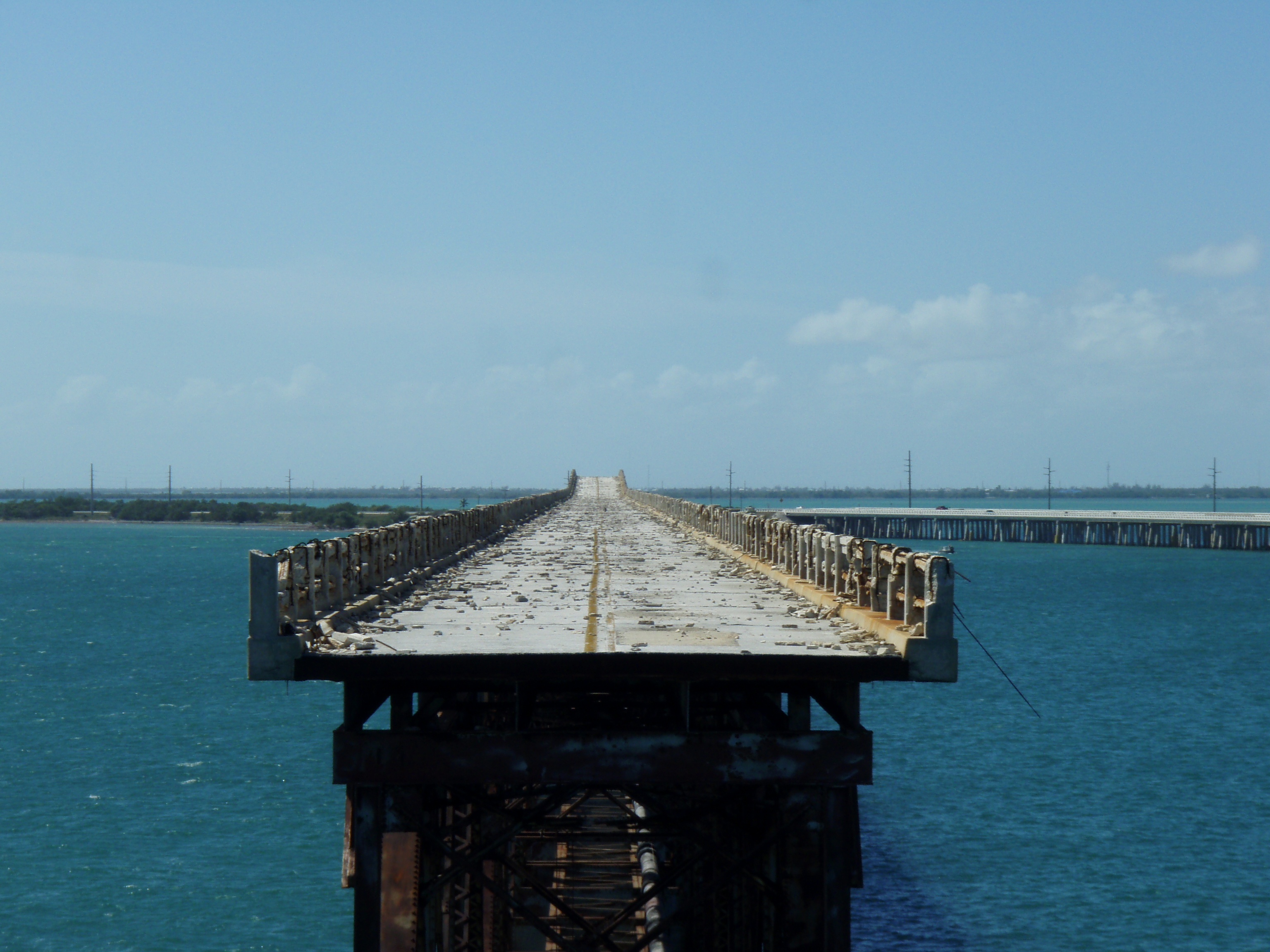
4. **U.S. Route 1 through the Florida Keys**Long before Instagram transformed the Florida Keys into a ubiquitous weekend getaway, U.S. Route 1, snaking gracefully through this sun-drenched, turquoise archipelago, represented, for the Baby Boomer generation, one of the most genuinely exotic and uniquely American drives conceivable within the continental United States. The legendary Overseas Highway, a truly remarkable feat of engineering and vision, stretches an impressive 113 miles. It performs a breathtaking dance from island to island, gracefully arching across vast, shimmering expanses of impossibly clear turquoise water, ultimately culminating in the quirky, vibrant embrace of Key West.
Back in its cherished heyday, embarking on this extraordinary journey felt less like a mere car trip and more like an intrepid expedition to a bona fide tropical paradise, all miraculously achieved without leaving the country’s borders. The exhilarating sensation of driving mile after mile with the expansive ocean stretching out on both sides, the warm, humid air streaming through open windows, and the tantalizing promise of Key West’s bohemian charm, created an unparalleled sense of adventure and idyllic escape. It was, in essence, a tangible realization of island dreams.
Families on these memorable treks would gaze in wide-eyed wonder at the ingenious engineering prowess of the bridges, or eagerly spot playful marine life gracefully navigating the clear waters below. They would collectively soak in the distinct, laid-back atmosphere of each unique island community. Every stop, every captivating vista, every roadside clam shack, was an integral part of the unfolding tropical narrative, contributing richly to a pervasive sense of leisurely exploration that felt both inherently exhilarating and profoundly relaxing.
However, the broader landscape of American travel underwent a significant transformation. As flights to the Caribbean and other international tropical destinations became progressively more affordable and remarkably accessible, the perceived need to undertake the long, often hot, drive to the Keys diminished significantly. Younger generations, prioritizing lightning-fast speed and efficiency, now instinctively opt for quick, direct plane rides to far-off beaches rather than dedicating precious hours to a two-lane road, even one as spectacularly scenic as the Overseas Highway.
While the allure of convenience certainly holds its merits, something profoundly precious is lost in this exchange. There is simply nothing that truly compares to the immersive, almost surreal experience of rolling down your windows and suddenly realizing, with a profound sense of wonder, that you are, quite literally, driving *over* the ocean. You are suspended, magically, between the boundless blue of the sky and the endless depths of the sea. This unique, visceral connection to the natural environment is a cherished memory that air travel, however efficient, simply cannot replicate.
Read more about: Your Retirement Nest Egg: Discover the 41 States (and D.C.) That Won’t Tax Your Social Security Benefits
5. **The Great River Road along the Mississippi**Imagine a ribbon of asphalt weaving through the very heart of America, a journey that felt like pure Americana itself. The Great River Road, an epic stretch tracing the majestic Mississippi River for over 3,000 miles, from the lush landscapes of Minnesota all the way south to the vibrant bayous of Louisiana, was once a cornerstone of the family road trip experience. This wasn’t merely a drive; it was a deeply immersive cultural odyssey that unfolded with every mile, connecting travelers to the very lifeblood of the nation.
For the Baby Boomer generation, this storied route offered an unparalleled exploration of the nation’s rich tapestry, a vibrant living history lesson. They reveled in the captivating mix of cultures encountered along the way, from the soulful blues clubs echoing in the Delta to the tantalizing barbecue joints of Memphis and the effervescent jazz scenes of New Orleans. Each stop, each city, contributed to a mosaic of regional identities, cementing the understanding that America’s narrative is not a singular tale, but a thousand diverse stories beautifully woven together along the banks of its greatest river.
This was a journey that fed the soul, a purposeful deceleration from the everyday pace of life. It invited families to absorb the subtle shifts in regional identity, the distinct flavors, and the profound historical echoes emanating from each riverside town. The unhurried pace was part of its profound charm, allowing for contemplation and genuine connection to the evolving American landscape, making every mile a discovery rather than just distance covered.
Regrettably, the expansive scope and deliberate slowness that once defined the Great River Road now pose significant challenges for modern travelers. In an age of instant gratification and tight itineraries, the commitment required for such an extensive, unhurried journey is often seen as prohibitive. It’s a path considered by many to be simply “too long, too slow, and too far off the beaten path” for the average contemporary tourist, who often prefers the efficiency of a plane ticket.
The tragic irony is that what was once considered ‘soul food’ for an entire generation of road trippers is now largely overlooked, a casualty of changing travel priorities. While air travel and more direct routes have their undeniable efficiency, they inadvertently bypass the rich, unfolding narrative that only a journey like the Great River Road can provide. It’s a poignant reminder that some of the most profound discoveries are made when we dare to step away from the fast lane and embrace the enduring wisdom of the slow route, rediscovering the authentic pulse of America.
Read more about: 15 Underappreciated Sedans: Your Expert Guide to Reliable Hidden Gems Delivering Value and Performance
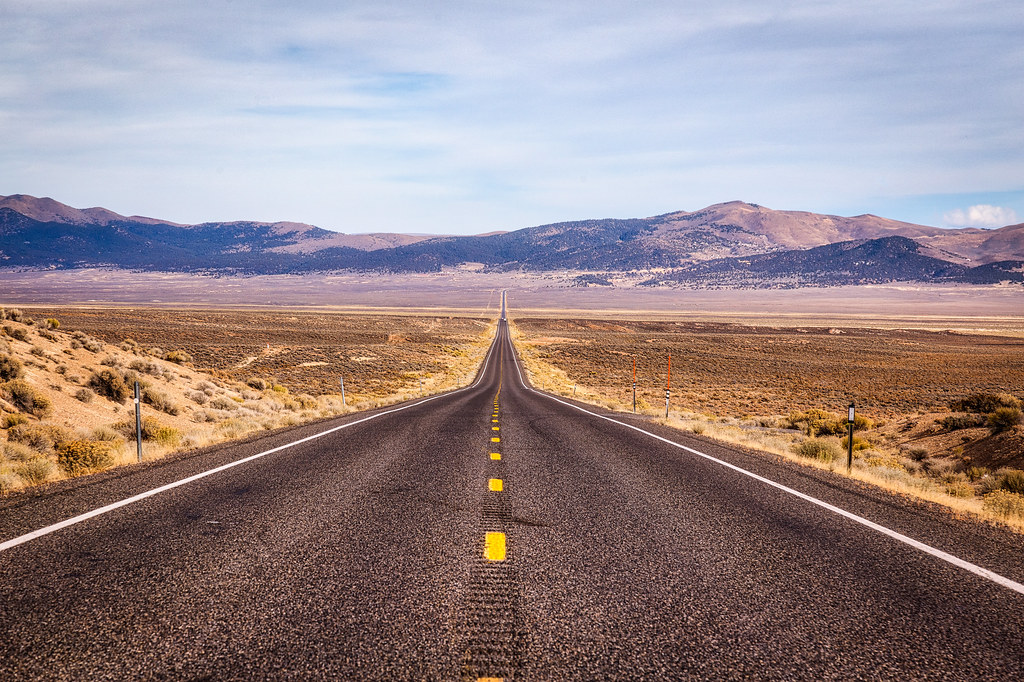
6. **The Loneliest Road in Nevada (U.S. Route 50)**For those yearning for a profound sense of solitude and boundless horizons, U.S. Route 50 through central Nevada was, and still is, a revelation. Famously branded “The Loneliest Road in America” by *Life Magazine* in 1986, with a stark warning that drivers might need “survival skills,” Nevada’s tourism board ingeniously transformed this perceived drawback into an irresistible allure. This route became a deliberate invitation to embrace isolation, an opportunity to explore “time capsule” ghost towns and landscapes so rugged they feel otherworldly, a true testament to America’s wild heart.
This 400-mile stretch, typically driven east from Baker to Carson City, was a pilgrimage for Baby Boomers seeking something fundamentally different from the commercialized mainstream. Absent were the bustling crowds and theme parks; instead, travelers found themselves immersed in miles of high desert, dramatic mountain ranges, and skies at night so intensely star-filled they seemed to defy description. For them, it was a potent reminder that America still harbored vast, untamed spaces, places where one could truly disappear for a while and reconnect with the raw, untamed essence of the continent.
The journey offered a curated collection of unique sights, perfect for those seeking immersion rather than mere transit. Visitors could linger in the extraordinary Great Basin National Park, a treasure trove home to 5,000-year-old bristlecone pines and the spectacular Lehman Caves, all while basking in its status as a world-class stargazing spot. Further along, Ely, nestled in Pony Express Territory, offered evocative rides on the 19th-century Nevada Northern Railway, transporting visitors back to a bygone era.
The route’s true charm lay in its myriad detours, leading to fascinating lost-in-time ghost towns and quirky roadside wonders. Austin boasts an 1860s station with original Wild West-style false-front architecture that cleverly hides the building’s true size, while Sand Mountain, a vast Sahara-style dune near Fallon, promises tranquil sunset walks amidst its shifting sands. A rustic rest-stop, Middlegate Station, dating to 1859, offered a welcome respite and tales of travelers past, and the bizarre Shoe Tree, a cottonwood adorned with hundreds of dangling shoes, provided a truly memorable, whimsical photo opportunity before reaching Carson City. Before the state capital, Frey Ranch Distillery offered a unique glimpse into artisanal whiskey production, with all ingredients grown on premises.
Today, however, the very quietude and unhurried exploration that once drew intrepid travelers are largely overlooked. Younger generations, accustomed to the efficiency of air travel and the allure of bustling destinations, often fly directly to popular hubs like Las Vegas or Lake Tahoe, inadvertently skipping the profound, slow crawl through this magnificent desert expanse. It’s a lamentable shift, as the unparalleled silence and endless skies offered by Route 50 are a true testament to the therapeutic power of the open road, a feeling of vastness and freedom that no destination airport can ever truly replicate.
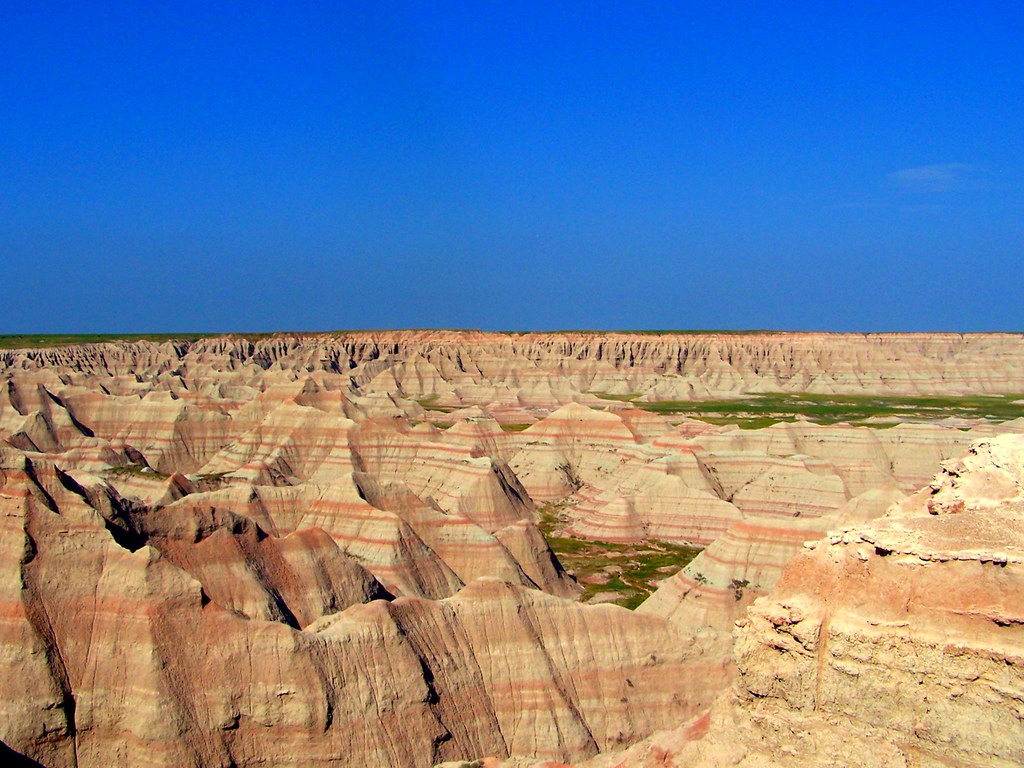
7. **The Black Hills and Badlands Loop in South Dakota**For Baby Boomers, South Dakota represented far more than just the monumental majesty of Mount Rushmore; it was an entire region steeped in natural wonder and adventure. The quintessential family summer pilgrimage involved winding through the verdant Black Hills, spotting majestic bison roaming freely in Custer State Park, and traversing the utterly unique, almost eerie landscapes of the Badlands. This circular route offered a captivating blend of iconic Americana and raw, untamed wilderness, inviting a deep, visceral connection with the land.
This was a journey tailor-made for families piling into campers and RVs, each mile unfolding new discoveries and unforgettable vistas. Children, with wide-eyed anticipation, would eagerly beg for a stop at the legendary Wall Drug, that kitschy roadside megastore whose ubiquitous billboards stretched for what seemed like an eternity across the vast prairie. These stops weren’t just commercial breaks; they were integral, cherished parts of the adventure, crafting shared memories against a backdrop of unparalleled natural beauty and playful Americana.
The allure of this loop lay in its profound connection to the American West, offering a visceral experience of its diverse ecosystems and geological marvels. From the ancient granite peaks of the Black Hills to the dramatic, eroded spires and buttes of the Badlands, it was a constant visual feast, a landscape that inspired awe and wonder at every turn. This route fostered a deep appreciation for the vastness and varied terrain of the American heartland, encouraging slow exploration and immersion.
In its heyday, this circuit embodied the spirit of discovery, a genuine adventure into places that felt truly wild and expansive. It allowed families to disconnect from the ordinary and immerse themselves in the extraordinary, from the solemn grandeur of national monuments to the whimsical charm of roadside attractions. These were the cherished moments that defined a generation’s understanding of authentic American leisure and exploration, an escape into the heart of the country.
Today, however, this once-beloved loop finds itself largely bypassed by the mainstream traveler. The advent of increasingly cheap flights and the ever-growing appeal of international destinations mean that South Dakota, despite its enduring beauty, is often inadvertently overlooked. Unless one is a dedicated road trip enthusiast actively seeking out less-traveled paths, many contemporary adventurers simply don’t make it out to this remarkable corner of the country, missing a truly singular American experience and a powerful testament to a forgotten wisdom: sometimes, the most enriching experiences are found precisely “in the middle of nowhere.”
Read more about: Beyond the Grand Canyon: 14 Underrated National Parks You Need to Visit Right Now
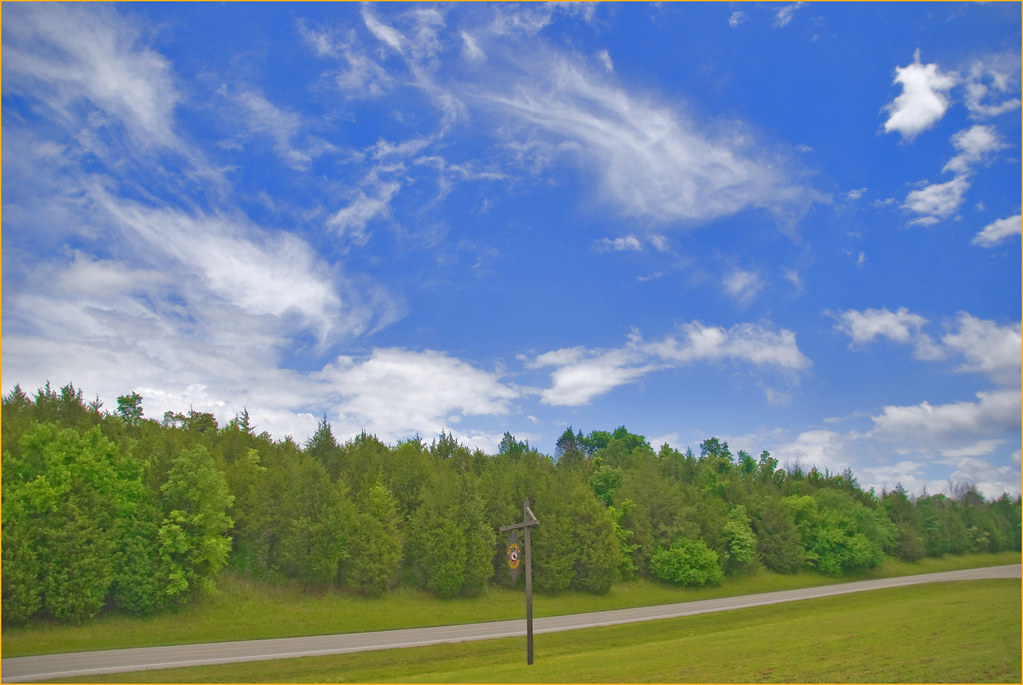
8. **The Natchez Trace Parkway from Mississippi to Tennessee**For a truly serene and reflective journey, the Natchez Trace Parkway stands as an unparalleled example of understated American beauty. This historic 444-mile drive gracefully winds its way through the lush landscapes of Mississippi, Alabama, and Tennessee, offering a profoundly slower and quieter alternative to the bustling modern highways. It’s a journey designed not for speed, but for contemplation, a living testament to centuries of natural and human history unfolding with every mile.
What made the Trace so uniquely cherished by the Baby Boomer generation was its pristine, untouched quality. There are no garish billboards or intrusive commercial trucks to mar the view; instead, travelers are enveloped by endless forests, verdant fields, and the gentle whispers of old towns that carry stories stretching back through centuries. It felt, for many, like a delightful form of time travel, transporting them to a more tranquil and unhurried era where the journey was its own reward.
This Parkway was an antidote to the frantic pace of modern life, emphasizing reflection over thrill. It consciously encouraged drivers to breathe deeply, to think, and to observe the subtle, beautiful changes of the seasons unfolding gracefully at a gentle 50 miles per hour. Every turn in the road presented a new vista, every stop offered a moment of quiet introspection, fostering an intimate connection with the landscape and its rich, hidden narratives.
The beauty of the Trace lay in its simplicity, its deliberate commitment to preserving a sense of timelessness. It was a route that offered genuine respite, a chance to truly disconnect from the digital clamor and reconnect with the simple joys of observation and presence. Families cherished the quiet conversations, the shared moments of awe as ancient trees canopied the road, and the feeling of stepping back in time.
However, in today’s world, where there’s an almost universal addiction to speed and efficiency, the deliberate pace of the Natchez Trace Parkway has regrettably fallen out of favor. Very few contemporary travelers choose to embark on this type of road anymore, opting instead for routes that promise quicker arrivals and more immediate destinations. The very essence of its charm – its unhurried nature – is often misinterpreted as inefficiency by a generation programmed for speed, which represents, perhaps, the most significant loss of all.
Read more about: The Timeless Call of the Open Road: 15 Iconic American Drives Perfect for Your Classic Car
The enduring appeal of these once-iconic road trips, so deeply ingrained in the memories of the Baby Boomer generation, stems from a fundamental truth: they were never merely about reaching a destination. They were profound experiences, offering long stretches of open road that gifted travelers the precious commodities of time and space. Time to talk, to think, to simply be, enveloped in silence without the constant clamor of modern distractions. While the swift currents of air travel and the conveniences of digital navigation have undeniably streamlined exploration, something undeniably precious is inevitably lost when the journey itself ceases to be the paramount focus. Perhaps we needn’t fully resurrect every one of these classic routes, but there is an undeniable wisdom in occasionally choosing the scenic detour over the efficient shortcut. It’s an opportunity to rediscover that elusive magic that arises when we consciously embrace the path less traveled, allowing our restless minds to truly savor the adventure. So, the next time the wanderlust strikes, pause and consider: is it the fastest route you truly crave, or the one that promises to be profoundly memorable, etching itself into the very fabric of your travel story?


